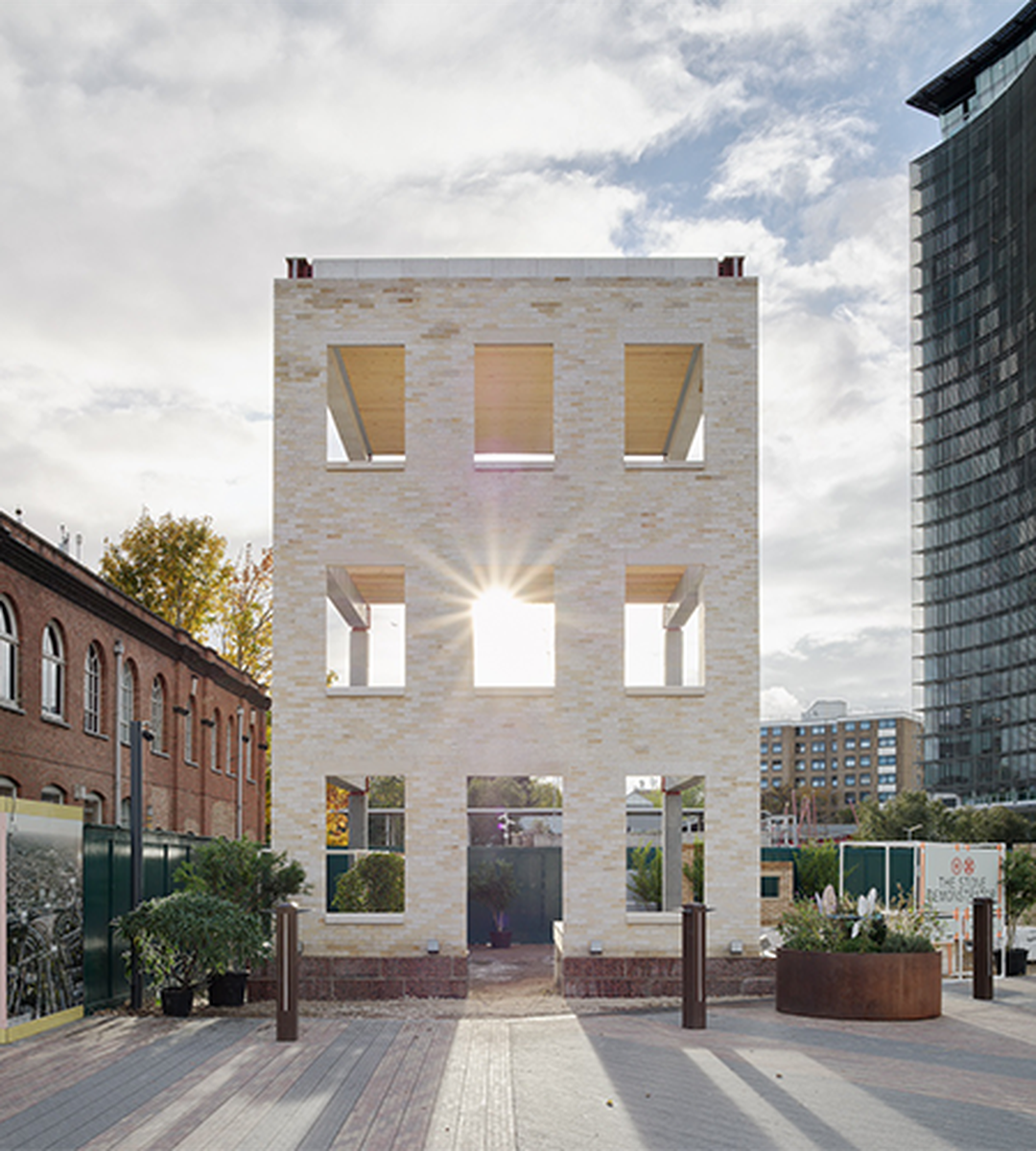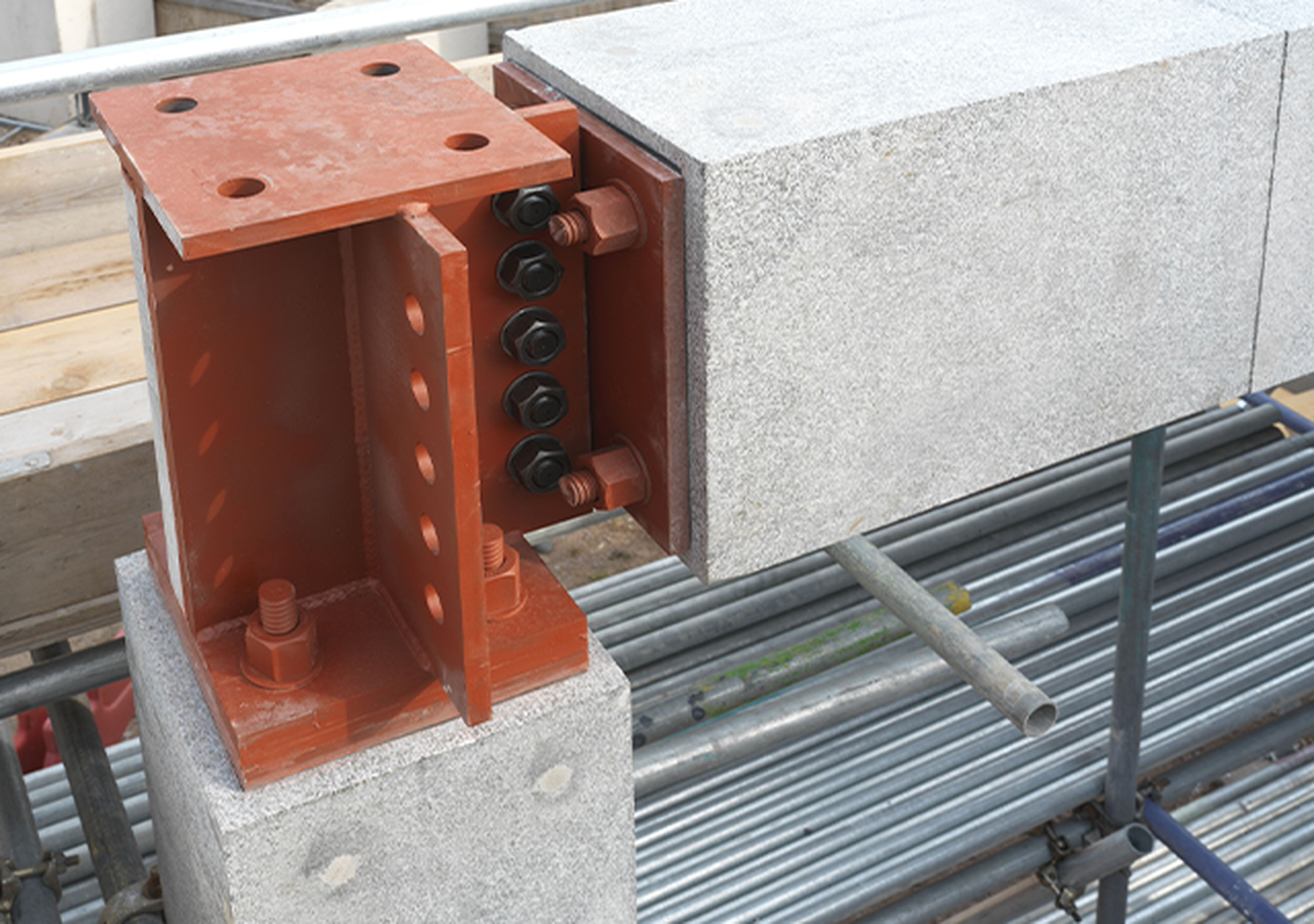The Stone Demonstrator – Building a Low-Carbon Future with Natural Stone
We’re proud to have contributed to The Stone Demonstrator, a pioneering low-carbon construction prototype currently on display at Earl’s Court, London, as part of the Design Museum’s Future Observatory research programme.
More than just a structure, the Stone Demonstrator represents a vision for the future of sustainable architecture. It reimagines how natural stone can once again take a leading role in urban development — not just as a decorative material, but as a modern, load-bearing, and sustainable alternative that combines beauty, strength, and longevity.

© Photography by Bas Princen

© Photography by Bas Princen

© Photography by Bas Princen
Building with Significantly Lower Carbon Emissions
Nearly 40% of global carbon emissions come from the built environment, with around 11% generated by the construction of new buildings. To reach net-zero targets, the construction sector urgently needs scalable low-carbon alternatives to steel and concrete.
Natural stone is one of the world’s lowest-carbon materials. The Stone Demonstrator shows how a pre-tensioned stone frame can reduce embodied carbon by about 70% compared to reinforced concrete, and up to 90% compared to steel. Even compared to fired clay, the stone elements are 98% lower in carbon, as they come directly from the ground rather than energy-intensive kilns.

© Photography by Bas Princen
A Modern, Efficient Construction Method
The Stone Demonstrator consists of stone blocks connected by steel tendons, compressed to create pre-tensioned beams and columns. The floorplates combine pre-tensioned stone slabs with timber joists, and the roof is made from dowel-laminated timber (DLT). The self-supporting stone brick façade emits up to 90% less carbon than conventional fired clay bricks used across London.
The system’s prefabricated modular elements can be assembled quickly on site and later dismantled and reused, further enhancing its sustainability. A comparable structure in steel with a brick façade would emit around 40,000 kg of CO₂, while a reinforced concrete version would emit 32,000 kg. In contrast, the Stone Demonstrator produces only 3,000 kg of CO₂ — a reduction of around 92%.
Innovation Through Collaboration
Designed by GROUPWORK, engineered by Steve Webb, and realised with leading industry partners including Brachot, the project combines advanced engineering with natural materials. Brachot supplied the grey structural stone at the back of the demonstrator — two types of Portuguese granite — used with a pre-tensioning technique that showcases the potential of stone in contemporary construction.
Tested by University College London (UCL), the structure will remain on display for 12 months as a live demonstrator for architects, engineers, and construction companies. Afterward, it will be dismantled and rebuilt for further testing, providing vital insights for the next generation of low-carbon building systems.

© Photography by Bas Princen

© Photography by Bas Princen

© Photography by Bas Princen
Towards Greener Cities
With the UK government targeting the construction of 1.5 million new homes, projects like this are essential to demonstrate how we can build at scale while drastically reducing environmental impact. By reintroducing natural stone as a core building material, we can cut emissions, shorten construction times, and create architecture of lasting quality.
As featured in the BBC coverage, the use of natural stone bricks reinforces the message that stone is not only low-carbon but also a timeless and beautiful building material.
A Shared Commitment to Sustainability
We are grateful to the Design Museum, Future Observatory, and the UKRI Arts and Humanities Research Council for bringing this research to life. Together, we’re proving that the path to a net-zero construction future begins with rediscovering the natural materials that built our cities in the first place.
Led by: Future Observatory, the Design Museum’s national research programme for the Green Transition
Funded by: Arts and Humanities Research Council (AHRC)
Curated by: Alexandre Bertrand & Pierre Bidaud , The Stonemasonry Company Limited
Architects: Amin Taha, Aaron Naish, GROUPWORK
Engineers: Steve Webb, Liam Bryant, Webb Yates Engineers; Steve McKechnie, Liam Duff, Arup
Stone bricks on facade: Hutton Stone Co Ltd, Albion Stone plc
Collaborators: Carrière de Luget, Frankenshoter, Lundhs , SigmaRoc plc, Johnston Quarry Group, Huat, Bambergnaturstein
📍 The Stone Demonstrator is open to the public at Empress Place, Earl’s Court Development site, London.